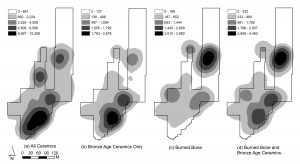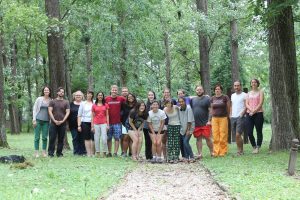The Körös region is the only one of the three in my comparison without detailed information about Bronze Age funerary customs. For this reason, in 2011, I initiated the study of a special Middle Bronze Age (Gyulavarsánd) site in Békés County. Ceramics from surface collection indicate two areas of prehistoric cultural debris. The larger one (Area A) is high with faunal material and no human bone. The smaller one (primarily Area B) has burned human bone on the surface, no faunal material, and close to exclusively Bronze Age ceramics. Geophysical survey (magnetometry and ground-penetrating radar) began in all areas in October 2011 and excavation in Areas B and C has revealed Middle Bronze Age burials. For full details on our work at this site, go to bakota.net.
 My research in the Körös area to date indicates that there is no evidence for a tributary system or social inequality in the Middle Bronze Age. It is therefore possible that unlike its neighbors, this society was egalitarian, despite the large fortified tells, complex metallurgy and trade. Investigating community norms through burial practices permits seeing whether inequalities in wealth were tolerated, and understand how this region integrated regional population and craft production without hierarchical control.
My research in the Körös area to date indicates that there is no evidence for a tributary system or social inequality in the Middle Bronze Age. It is therefore possible that unlike its neighbors, this society was egalitarian, despite the large fortified tells, complex metallurgy and trade. Investigating community norms through burial practices permits seeing whether inequalities in wealth were tolerated, and understand how this region integrated regional population and craft production without hierarchical control.



